Time-of-Use
Statewide, electricity rates are changing to better match the availability of lower-cost renewable energy on the grid.
What is Time-Of-Use?
Time-of-Use rates were implemented statewide as required by the California Public Utilities Commission (CPUC) to support California’s shift toward clean energy. SVCE and PG&E customers not already on a Time-of-Use rate were automatically transitioned to Time-of-Use in June 2021.
Under Time-of-Use pricing, your energy rate varies based on when you use electricity. Using electricity before 4 p.m. or after 9 p.m., when power on the grid is the cleanest and cheapest, can helps reduce your energy bill and cut fossil fuel emissions across the state.
With Time-of-Use pricing, you have the power to control your electricity bill by shifting your energy usage to avoid excess energy use during “peak” hours between 4 p.m. and 9 p.m., when energy will cost more.
If the new Time-of-Use plan is not right for you, there are choices. View your rate options to see which is best.
How Does Time-of-Use Work?
Rather than being charged only by how much energy you use, Time-of-Use considers the time of day when energy is used. Renewable energy on the grid is higher during the day with lots of solar production, and at night with clean wind energy and hydropower. However, in the evening between the 4-9 p.m. “peak”, the sun sets and fossil fuel power plants switch on. This makes up for the loss of solar, and to meet the demand of people ending the workday and turning on appliances.
To maximize renewable energy usage, the state transitioned to Time-of-Use rates which makes energy cheaper during “off-peak” times, before 4 p.m. and after 9 p.m. By changing your energy intensive household activities to off-peak hours, you can save on your utility bill.

How Do I Save Money on Time-of-Use?
Use less power between 4 p.m. and 9 p.m. By doing this you are avoiding “peak” electricity hours when pricing is the highest.
Things to do during “off-peak” hours
- Run your dishwasher, washing machine and dryer
- If you have air conditioning, run it in the afternoon before 4 p.m., to pre-cool your home
- If you have an EV, charge it during off-peak hours
Things to do during “peak” hours
- Kick your air conditioning up to 78 degrees, health permitting
- Load your laundry or dishwasher so it is ready to run after peak hours
- Turn off unused devices like computers or televisions
Switching to energy-efficient appliances will also help reduce your home’s electricity use. Ensuring your home is utilizing LED lightbulbs and smart power strips can help reduce un-avoidable electricity use during on- and off-peak times. Smart electric appliances can now be set to run during specific times of the day, browse electric appliances with the Appliances Assistant.
Have questions about
Time-of-Use?
These are some of the most common questions we receive from the community. We have plenty of resources to share if you can’t find something here. Reach out to us. We’re here to help.
Time-of-Use electricity rates are higher or lower based on when electricity is used during the day, versus being based on the total volume of electricity used in a month (known as a ‘Tiered’ rate). Most residential customers with SVCE are currently on a Tiered rate. In June 2021, many SVCE customers on the Tiered rate will be switched to a Time-of-Use rate.
Energy used between the 4 p.m. to 9 p.m. ‘peak’ time, when electricity demand is highest, will be at a higher price. And energy used at ’off peak’ times before 4 p.m. and after 9 p.m. will be at a lower rate.
Shifting your energy usage from on-peak to off-peak hours will help save you money on your electricity bill!
The Time-of-Use transition is a part of a statewide effort to propel California into the clean energy future. Through lower off-peak rates, the transition promotes electricity use when electricity generation is cleanest and lowest-cost. Conversely, higher rates during the early evening peak encourage customers to use less energy during these hours, and reduce the need to temporarily ramp up energy production from dirty, fossil-fuel based power plants.
With some exceptions, all residential customers in the SVCE service area who were not currently on a Time-of-Use plan were automatically transitioned to the Time-of-Use (E-TOU-C) rate in June 2021. Solar customers not already on a Time-of-Use rate were also part of this transition.
Medical Baseline customers are exempt from the transition, as are customers who have started electric service since October 1, 2020. Customers already on a Time-of-Use plan, such as EV drivers on the EV-2 A plan, will be unaffected. Commercial customers not already on a Time-of-Use rate were transitioned in March 2021. Customers can view rate options on PG&E’s website.
Yes, customers can decline the transition and change back to their previous rate plan or choose another Time-of-Use rate. Rate plans can be viewed on the PG&E website. Customers can also use the PG&E Rate Comparison Tool to figure out which rate plan is best for them.
Things to do during off-peak hours
• Run your dishwasher, washing machine and dryer
• If you have air conditioning, run it in the afternoon before 4 p.m., to pre-cool your home
• If you have an EV, charge it during off-peak hours
Things to do during peak hours
• Kick your air conditioning up to 78 degrees, health permitting
• Load your laundry or dishwasher so it is ready to run after peak hours
• Turn off unused devices like computers or televisions
SVCE procures clean energy from renewable and carbon-free sources to meet the total annual demand of our customers. But supply and generation sources fluctuate hourly. Historically, the energy industry performs renewable and carbon accounting on an annual basis. This is changing as more CCAs and regulatory agencies are seeking to match clean energy supply with demand on a 24/7 basis.
This statewide transition, directed by the California Public Utilities Commission, aims to better align electricity demand with clean energy generation from renewables, especially solar energy during the middle of the day. Reducing demand during the evening peak reduces the need to ramp up fossil fuel (e.g. natural gas) plants as solar facilities power down. Reducing natural gas use will lower emissions across the state. This transition will help California expand its clean power supply, and encourage customers to utilize clean power when it’s the most plentiful and lowest-cost.
PG& mailed letters 90 and 30 days in advance of a customer’s Time-of-Use transition with information about their rate options. The letters were co-branded with SVCE. The 90-day notification provided customers a rate comparison based on their historical usage. The comparison provided an estimated, annual energy cost on the new Time-of-Use rate, the existing tiered rate and another Time-of-Use rate option.



